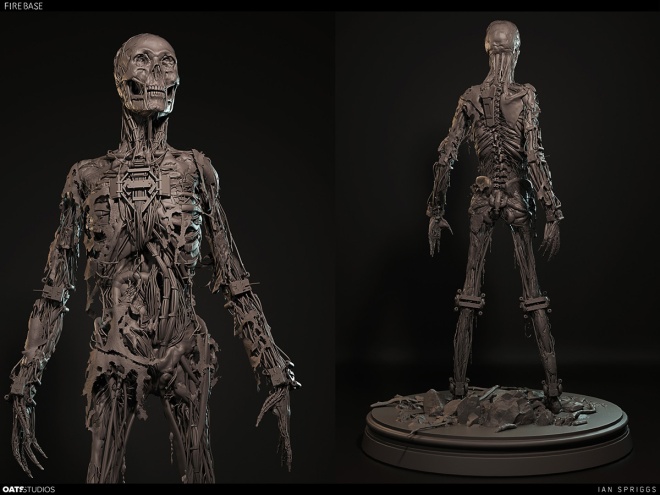
Ian Spriggs is a character artist with experience at several visual effects studios and most recently at Neill Blomkamp’s Oats Studios. Here, he has taken on some of the most elaborate modelling and texturing tasks of his career. Spriggs is also well-known for his CG portraits and self-portraits, including one of Blomkamp himself.
I sat down with Spriggs for THU TV at Trojan Hose was a Unicorn, and you can read a transcript of our conversation below, where we dive into his portrait work, coming on board and Oats and crafting the incredible Zygote creature for one of Blomkamp’s shorts.
vfxblog: How did those CG self portraits become something you did?
Ian Spriggs: I started them in 2014. Before that all my personal work was kind of political and I wanted to get it more personal. I just wanted to focus more on what was important in my life, and that was family and friends. I started off my portrait series with my self portrait. I was always doing character designs, but I never had the chance to push them as far as I wanted to. So, the self portrait is personal, I can spend as long as I want, so I can actually push it as much as I want.
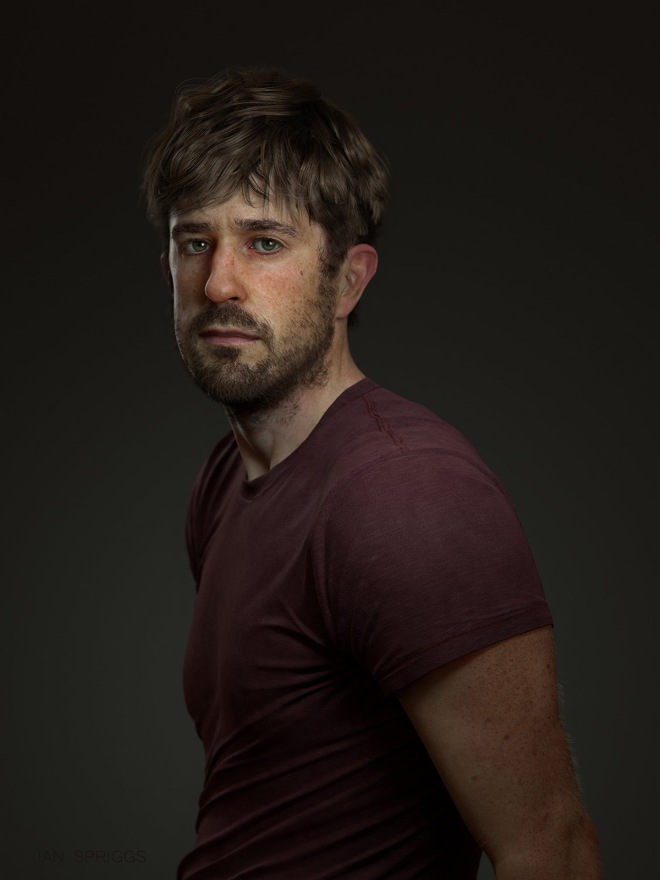
vfxblog: How do you actually do them? Are you modelling from scratch? Are you using photogrammetry? Are you using photo reference?
Ian Spriggs: I model them from scratch, usually I have a base mesh which I’ve rigged and I can get quick poses from it to sculpt on. I think the trick is is that I have so much photo reference. I’ll do a two hour photo shoot of all my subject, I’ll change the lighting, change the poses. I’m inspired by the masters like Rembrandt. So, I’ll find an image I like, and I’ll try to mimic it in some way when I am doing my photoshoot. I won’t copy it exactly, but I let it inspire me.
vfxblog: Is there a time that it takes you to do one of these? Or does it just depend on how much free time you have?
Ian Spriggs: Usually, it takes two to four months. But, it depends. The portrait I did of Neill Blomkamp, he’s got his hands on his knee in front of him. Hands are just as complicated as the face, they’re even more expressive sometimes and something like this would add a lot more time to the project. But, it’s usually two to four months.
vfxblog: What do you feel is a portrait done in CG compared to a portrait done as photography? Do you have the Uncanny Valley in mind when you start one of these portraits?
Ian Spriggs: I really like that challenge. With my digital portraits, I was worried about entering that. There’s different ways you overcome the Uncanny Valley and I think what a lot of people focus on is to get the perfect skin shader. I’m not technical so that’s not a path I can take. I gotta figure out another way to get over the Uncanny valley. I base mine more on inspirations like Rembrandt. I try and relate my work, by using the techniques they did. In the portraits done by the Masters, you can see a painting done hundreds of years ago and you can still connect to that person and understand who they are. And why can’t we do that in digital? Digital is a tool. We still have the same rules as they did. I try to figure out why we connect with these paintings and incorporate it into my work.
vfxblog: Let’s talk about Oats Studios. That’s been getting so much attention with what Neill’s been doing because it’s a very different visual effects company, in fact, filmmaking company, really. Before we go there, where did you yourself get started and what sort of companies and projects have you worked on?
Ian Spriggs: I went to Seneca College in Toronto, that’s 2006. And then I got a job at Starz Animation, I was just doing the basics. We did a lot of cartoons, like Gnomeo and Juliet. Then, I broke into the visual effects side of things at Mr. X in Toronto. About three years ago, I moved to Vancouver and I worked at ILM. That’s when Neill reached out to me. I think he saw my work on ArtStation and he just reached out to me and asked if I wanted to be a part of this new project. When he actually emailed me, I thought it was a spam. I was like, ‘This can’t be true.’
vfxblog: So Oats is Neill’s idea about creating his own stuff away from the studio system, doing shorts and getting them out there for people to see and comment on. But, I’m interested, when he approached you and it was a secretive thing, what made you say yes?
Ian Spriggs: I got an email from Chris Harvey, who’s the visual effects supervisor and he was like, ‘You know what? I can’t even explain to you what the job is. Just come to the studio’. I go to this place called Richmond in Vancouver. There’s nothing there, it’s just a couple of warehouses. I swear, I thought I was in the wrong spot. And I walk up to this warehouse, it looks like it’s gonna be demolished any day. But, I see a really expensive car outside. And I’m like, ‘Maybe this is the right space.’ as soon as I go into the studio the Moose from Chappie, 25 foot tall, stood there in front of me, just looking at me.
And then it’s all the Chappie robots all along the side of the wall, all the props, and it’s just props and toys and robots. Then, Neill comes out and he’s like, ‘Ian, I love your portraits.’ And I was like, ‘I’m sold. I want to work for you.’
vfxblog: And what did you know about it going in and what were some of the first things that actually happened as it ramped up?
Ian Spriggs: I didn’t really know much about it before that. People told me, ‘Neill’s opening a studio.’ But, it was a big hush hush, nobody knew anything about it.
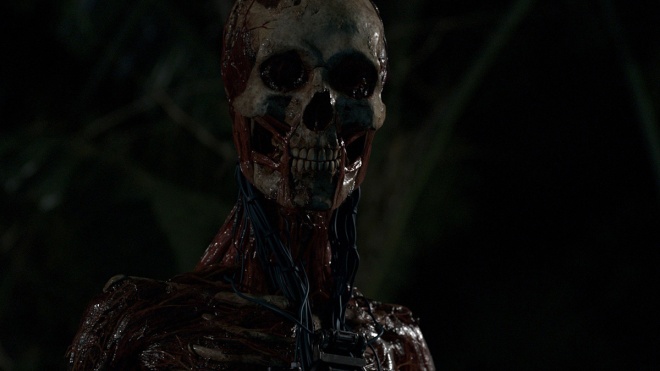
vfxblog: What became your role there?
Ian Spriggs: The first thing I did was I modelled a giant for one of the shorts. We did so much work in those first two years. We didn’t actually show all of it. The stuff we released – we probably only released half of the stuff we did. I’ve made more assets in the last two years than I have in my entire career.
vfxblog: What did you do for the first short that was released, Rakka?
Ian Spriggs: I modelled the Rakka alien. He’s called a Klum. There was an original design but Neill wanted it changed so I had to do a few variations of different designs. It was the first time I ever did any concepts. I’m usually digi doubles and human figures, but then Neill’s like, ‘Well, you’re our character artist, you gotta do creatures, too. So, we need you to do some variations.’ So, I did some concepts for that, that was quite challenging ’cause it was new to me. But, I loved it and Neill was happy with the results.
And then, there’s this black wax that goes over the Klums. The black wax is kinda like the Klum skin, it can be moulded to anything they want it to be. It can be a spaceship, or it can be an operating tool.

vfxblog: The next one was Firebase and then there’s Zygote, which I want to ask you about, because your modelling and texturing and design on that crazy, multi-limbed character was amazing. How did you approach it?
Ian Spriggs: It was prehaps the most complex asset I have ever worked on. There were roughly 68 digi-doubles all attached to each other. It was tricky to figure out how to do it and make it possible for the rigger. I didn’t want to just dynamesh a whole bunch of limbs together, I wanted to somehow maintain uvs because I don’t want to be texturing each hand separately. Make sure it is cleaned up and it’s ready for production was one of the hardest parts of it. So, I had to think of workflows, how to actually get it done and make everyone else in the pipeline happy. It was a challenge both technically and artistically.
vfxblog: What do you remember was the comment that Neill or the team said, ‘This is what the character needs to be.’ What was the overriding principle of Zygote?
Ian Spriggs: Neill didn’t want it to look like The Thing. He didn’t want it to be alien, he wanted it to look human. And he’s like, ‘I want humans with no faces, just body parts and I want it to feel like it’s stitched together.’
vfxblog: What tools did you use for Zygote?
Ian Spriggs: I just used Mudbox for modeling, textured in Mudbox as well, and then just some Photoshop for the textures. I just use what feels comfortable. I know a lot of people use ZBrush and people say ZBrush would’ve been better for the Zygote. But, I know how to use the tools I do, so it’s easier for me this way.
vfxblog: You’ve worked in a couple visual effects studios, big ones like ILM, Mr. X. What is, apart from the obvious, which is it’s Neill’s own stuff, what is the different philosophy at Oats from your point of view?
Ian Spriggs: There’s so many different things about Oats. If I’m working on an asset and I wanna get a revision, I don’t have to go through all these steps. I just say, ‘Neill, come check this out.’ And he’ll just come over and check it out and be like, ‘Yeah, I like it. Just keep working.’ So, there’s no time wasted with any middle people. You get a lot of things done quickly.
The last five percent takes 95 percent of the time. So, we usually stop at 95 percent or 96 percent and be like, ‘We gotta just make sure we can get this stuff done.’ So, we won’t worry about finessing every little detail because it’s not really that important. Obviously we try our best to make it as good as we possible can but it’s more important to get the entire short looking good as a whole rather than focusing on tiny details.
Neill told me it was like Oats Volume One. Imagine an album: most directors, they only get to produce a couple movies in their entire lifetime. They have so many ideas, why not just produce a lot of things, so doing these shorts for him was just album one. And then, Volume Two will be album two. And if you’re gonna push everything to 100 percent, you might just not have time to create all these albums. And if you make ten shorts, the tenth one might be like, ‘That’s the one we need to make a feature film out of.’ And then, you get the best idea out of the bunch instead of just picking the first one and making that one.
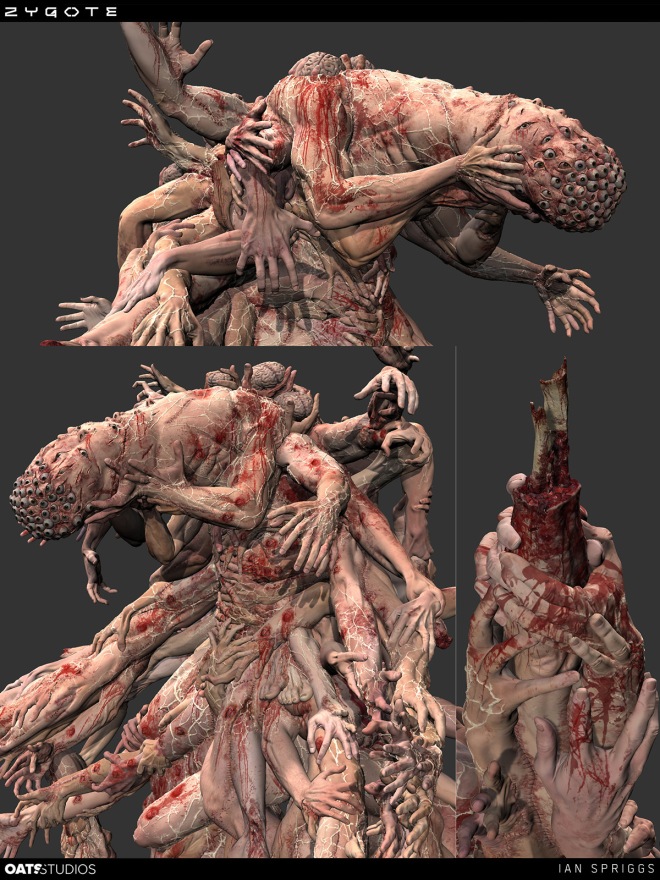
vfxblog: How many people are at Oats at any given time? Does it change?
Ian Spriggs: The visual effects team at its max is, I think, 25 people. So, there’s 25 people that do all the visual effects for all of Oats, for all the shorts, it is a tiny team for the amount of work we have done. But, then, that doesn’t include the practical effects teams and the camera team, at Oats everything’s done under one roof, from start of production to end.
vfxblog: Yes, in fact, I mean, I’ve been talking about the visual effects side of it. But what’s interesting about Oats is that it’s go to whoa, isn’t it?
Ian Spriggs: The first day of Oats, Chris Harvey (the visual effects supervisor) brings me in and he’s like, ‘Come check this out.’ And he takes me to the back and there’s a tent. He takes me into the tent and I feel like I’m in Vietnam. Neill was actually shooting a clip for the Firebase and there’s the alien lying on the floor and Neill’s just looking over it. It was quite surreal, but yeah, he was shooting in the studio, the practical effects are done in the studio and you can just talk to these people.
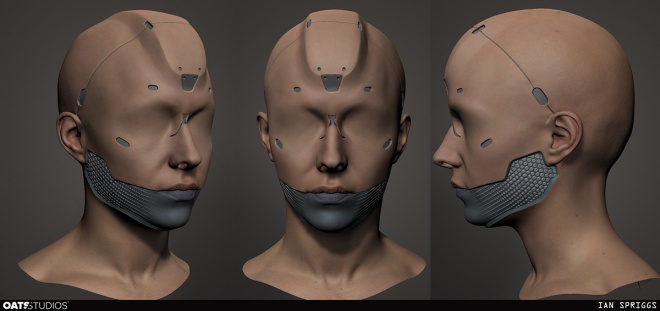
vfxblog: Another thing that’s different about Oats is that people can comment on them online and say what they think. What’s that like to be part of that kind of feedback?
Ian Spriggs: That’s actually amazing. I think that’s the whole point of Oats. Because Neill wants to do something with the audience. He doesn’t want them to be separate, he wants the audience to like, ‘What do you guys want?’ That’s why he did three shorts. And then, maybe in volume two, we can either make a feature film with this or we can just keep on doing more shorts and figure something better out. But, he wants more interaction with the audience.
Find out more about signing up to THU TV, a collection of dedicated shows, recordings and more recorded at Trojan Horse was a Unicorn, here.

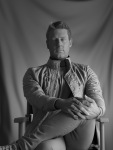

Post a Comment